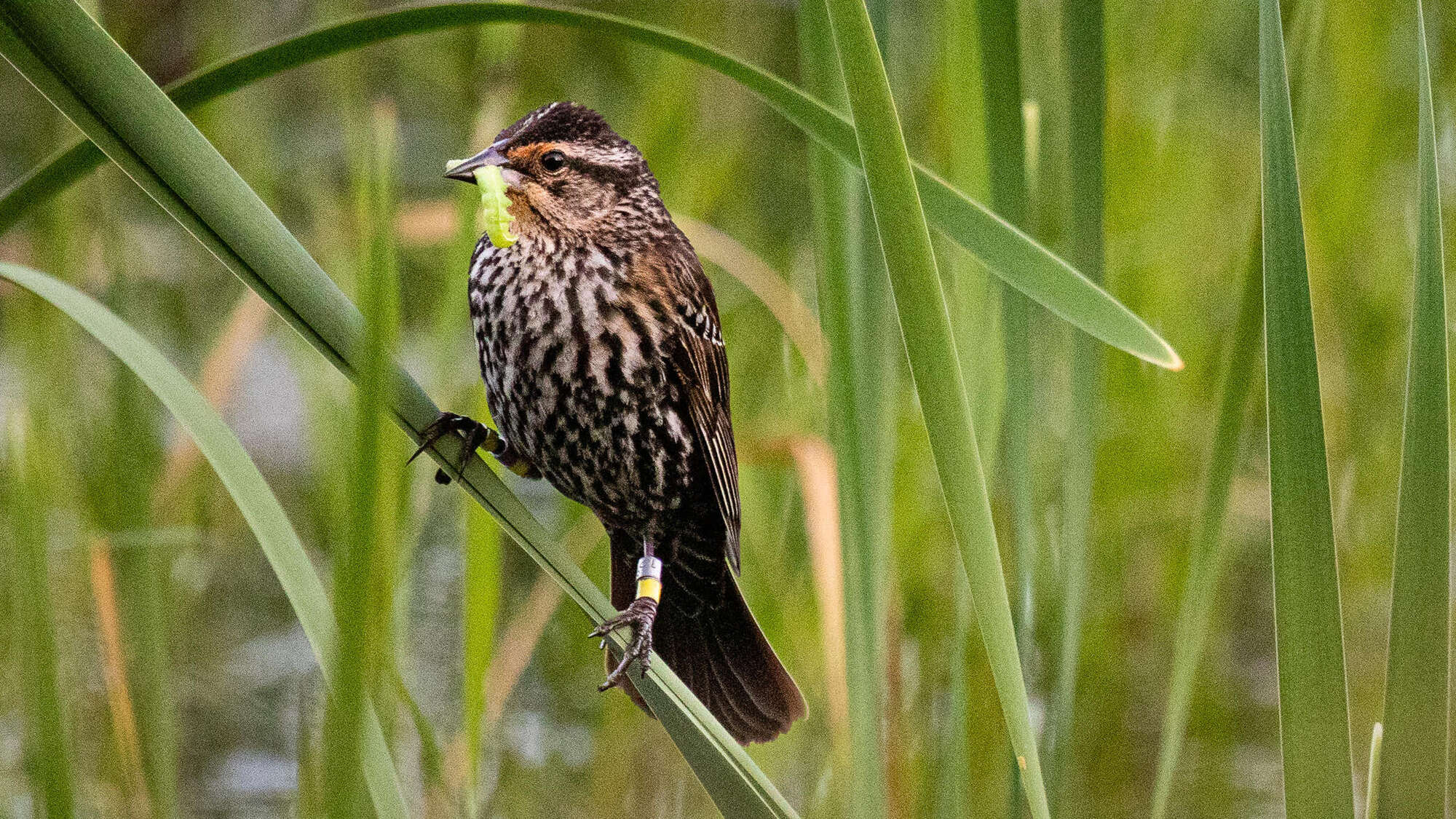Artificial Intelligence Meets Animal Biology
9 May 2024

Priscilla Adebanji, Computing Science Student
Artificial intelligence could make studying birds easier, thanks to the work of a computing science student at Augustana Campus. Funded by a stipend from the Undergraduate Research Initiative (URI) — a donor-supported resource — the research shows potential for multidisciplinary advances in both computing science and animal biology.
The study of bird behaviour not only requires expertise in bird biology, but also requires researchers to review hours of video to detect the identity and actions of each bird. For Augustana professor Ivana Schoepf, who is exploring the effects of parasitism on bird behaviour, that meant reviewing two field seasons’ worth of video — totalling about 30 hours of film on 30 nests. So Schoepf approached computing science professor Thibaud Lutellier looking for a way to automatically detect the birds without having to review the tape.
Which is how fourth-year computing science student Priscilla Adebanji ended up spending last summer experimenting with AI to improve the analysis of video showing red-winged blackbirds and their nests.
Priscilla worked through various challenges, including false readings generated by existing AI models. “They seemed to sometimes detect the bird as an airplane, and things like shadows were falsely detected as bears in the background,” she says.
Using computer vision tools and motion detection algorithms to help analyze the video, she reduced the tracking sensitivity enough to count the birds, single them out from other objects and determine whether the same bird had already been recorded.

One of the birds that Priscilla Adebanji's research has been able to photograph.
By the end of the summer, Priscilla was able to develop software that refined Schoepf’s raw footage enough to pinpoint the exact times the birds visit their nests to feed their chicks, along with whether they were entering or leaving. Though the software still needs more work, it has reduced the footage review time from eight hours to a couple of minutes.
“It feels good to work on a real-world application, to be able to help people with the knowledge I’ve learned.” — Priscilla Adebanji
Donor-funded supports like the URI stipend are what make it possible for students like Priscilla to engage top mentors and research projects that could be game-changers in different fields of science. On the animal biology side, Priscilla’s software shows applicability to a multitude of species and projects in different settings, and could improve and expand ecological research. For the AI field, small, innovative projects like this one highlight issues with computer vision, and can thus improve motion-detecting technologies such as self-driving vehicles and drones.
Thanks to the generosity of donors, Priscilla and other ambitious students can take full advantage of these opportunities, and focus on getting the most of their research experience.
As she completes her fourth year of undergraduate studies, Priscilla says the project has sparked her interest in exploring AI as a career and taken her beyond the classroom.
“It feels good to work on a real-world application, to be able to help people with the knowledge I’ve learned.”
Did you know?
Priscilla’s AI software has reduced video footage review time from eight hours to a couple of minutes.
Donor Impact
40
successful applicants per year to the URI Undergraduate Research Stipend
$7,500
the amount of each stipend